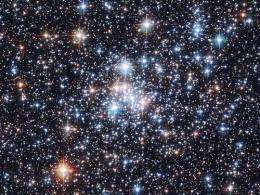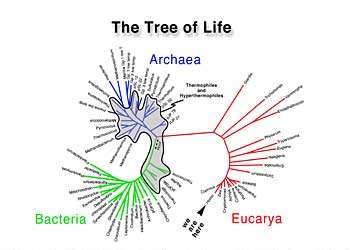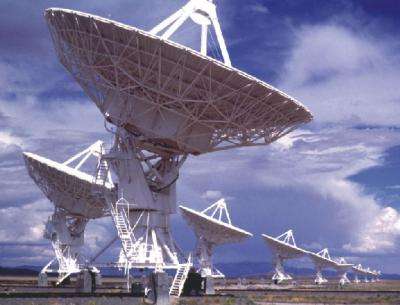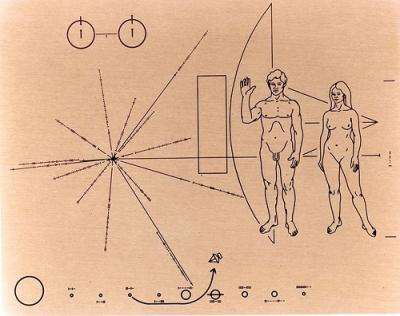The Eerie Silence

Why have we not made contact with aliens after so many years searching the depths of space? The Eerie Silence, a new book by SETI researcher Paul Davies, provides a fresh and thoughtful look at this question.
If aliens exist, where are they?
The physicist Enrico Fermi asked this question 60 years ago, and it has since come to be known as the “Fermi Paradox”. Given how vast the universe is, and the billions of years that life has had to spread across the cosmos, why have we not found any evidence of alien life?
Paul Davies takes a fresh look at this question in his engaging and thoughtful new book, The Eerie Silence.
Davies runs Arizona State University’s Beyond Center for Fundamental Concepts in Science, and he’s involved in the search for extraterrestrial intelligence (SETI). In fact, he is the Chair of the SETI Post-Detection Taskgroup, which has developed a plan for the day we do find life elsewhere.
In his new book, he provides an overview of various efforts to contact aliens, and he also notes how recent discoveries have led to the widespread belief that life must be common in the universe. Hundreds of planets have been detected orbiting distant stars, and while these planets are more like Jupiter than Earth, that’s mostly due to our detection methods. Less massive planets will likely be found by newer telescopes, and the fact that we have already found so many worlds bodes well for the potential number of habitable planets in the galaxy. In addition, life has been discovered in some of the most extreme environments on Earth, including the deep subsurface where sunlight cannot penetrate. This suggests that life is possible in all sorts of unusual places, including planets we once would have considered inhospitable to life.
Davies asks us to step back from the popular view that life must be common in the universe. Instead, he says we should consider the possibility that life on Earth is a fluke, a completely improbable event - a winning ticket in a lottery with a trillion-trillion-to-one odds:
To a physicist like me, life looks to be a little short of magic: all those dumb molecules conspiring to achieve such clever things! How do they do it? There is no orchestrator, no choreographer directing the performance, no esprit de corps, no collective will, no life force - just mindless atoms pushing and pulling on each other, kicked about by random thermal fluctuations. Yet the end product is an exquisite and highly distinctive form of order. Even chemists, who are familiar with the amazing transformative powers of molecules, find it breathtaking. George Whitesides, Professor of Chemistry at Harvard University, writes, “How remarkable is life? The answer is: very. Those of us who deal in networks of chemical reactions know of nothing like it.”

Davies says there is nothing in the laws of chemistry or physics to indicate life is inevitable, or even a cosmic imperative. He notes there is no mathematical regularity to life, revealing some underlying basic law of nature. Instead, “the chemical sequences seem totally haphazard.” And yet, life has its own sense of order, since re-arranging those chemical sequences can upend the whole system.
“So the arrangement is at once both random and highly specific - a peculiar, indeed unique, combination of qualities hard to explain by deterministic physical forces,” he writes.
Biology’s law of evolution may have played a role in life’s origin, since all that’s theoretically needed to get the system going is the replication of information. For life today, that replication occurs with DNA, but for the first life, patterns in a physical structure or even particular arrays of atoms may have been enough. While life’s origin from non-living materials is still a mystery, Davies says that life may be one possible outcome of complex self-organizing systems. Just like ant colonies, the stock market and the internet, life may result from a law of increasing complexity that occurs under certain circumstances.
To find out whether life was a bizarre accident unique to Earth, we need to search for life elsewhere. Davies points out that there has only been one successful mission by any space agency to search for life on another planet: NASA’s Viking mission.
“The media tend to present all Mars exploration as part of the search for life, but this is a sly piece of disinformation,” he writes. “It is true that some Mars exploration - looking for water, for example - bears indirectly on the question of life, but explicitly biological experiments have for thirty years been systematically eliminated by NASA missions.”
Most scientists think the Viking life experiments found no proof of life, although some, including Gilbert Levin, who designed Viking’s Labeled Release experiment, contest this conclusion. Even if we were to unquestionably find life on Mars, Davies notes, this wouldn’t tell us if there was life farther afield, since Earth and Mars swapped material back and forth over the history of the solar system. Meteorites striking Earth sent some of our rocks hurtling into space and on to Mars, and vice versa - and some of those rocks could have contained microbial life. .
To really answer the question, we need to find evidence for life on a far-distant planet. However, Davies says another way to prove that life is more than a freak accident is to find a completely different kind of life on Earth.

“If life started more than once on Earth, we could be virtually certain that the universe is teeming with it,” Davies writes. “Unless there is something very peculiar about our planet, it is inconceivable that life would have begun twice on one Earth-like planet but hardly ever on the rest.”
All life on Earth can be placed on a diagram called the Tree of Life, which indicates how the various organisms can be traced back to a common ancestor. But a shadow biosphere would be composed of life that would not have a place on the Tree. Davies writes:
If you examine the innards of a microbe, chances are you will find the same stuff - DNA, proteins, ribosomes - as is found in you and me. At least, that has been the experience so far. But microbiologists have only just scratched the surface of the microbial realm. Our world is literally seething with these tiny organisms. Just one cubic centimeter (0.061 cubic inches) of soil might contain millions of different species adding up to billions of microbes in all, and the vast majority haven’t even been classified, let alone analyzed. Nobody knows for sure what they are; for all we know, some of them could be life as we do not know it.
Because scientists must culture microbes in a lab in order to study them, an entirely different form of life would go unnoticed because the tests are custom-made to handle known life forms. Davies says new tests need to be developed to see what might be hidden right in front of our eyes.

Astrobiologists often say that complex life may be rare in the universe, but microbial life is probably abundant. They base this assumption on Earth’s history, because simple life started relatively quickly here, perhaps within 500 million years after Earth’s origin, but multi-cellular life didn’t appear until much later. The first evidence in the fossil record of multi-cellular life dates back to about 2 billion years ago, some 2.5 billion years after the Earth formed. The story of life on Earth is mostly a saga of single cells.
Even if complex life can be found elsewhere, does that mean it will be intelligent? By “intelligent,” we often mean a species that will use science to investigate the universe. Davies again throws cold water on our assumptions, saying the scientific method is a specific outcome of Greek philosophy and medieval European monotheism. Despite this, Davies gamely uses the Drake Equation to estimate there could be 10,000 civilizations in the galaxy capable at this time of communicating by radio waves.
“At this time” is an important element of his estimate, since a barrier to interstellar communications is not only distance but time. Consider aliens living one thousand light years away. Davies points out that if they were able to see Earth in their telescopes, they would not see us as we are today, but as we were in the year 1010 A.D. - long before we invented radio dishes. And because human radio technology is only about 100 years old, it will take another 900 years for our first signals to reach them.
Communication signals on Earth are now mostly sent by optical fibers rather than by radio wavelengths, so Davies says there’s no reason to think advanced aliens would bother with that technology. Instead, he suggests they may use neutrino beams, various wavelength beacons, or a galaxy-wide internet system to communicate. We might even find clues to alien technology closer to home in the form of reproducing nanomachines, or microprobes that latch onto DNA. Davies thinks the SETI search should be expanded to include these, and it also should look for alien ‘footprints’ in space that indicate advanced mining or engineering projects, or waste dump sites.

One problem with our past searches, says Davies, is we tend to imbue aliens with human motivations and behavior. He is especially critical of previous attempts to craft messages for aliens. The phonographs on the two Voyager spacecraft, which had greetings in 55 languages, as well as music, bird song, and other sounds from Earth, he calls “a pointless gimmick.”
Davies is equally dismissive of the plaques on the Pioneer 10 and 11 spacecraft, which depicted male and female human figures (with the male’s hand raised in greeting), and our solar system and its location in the galaxy:
This image may be worthless as far as signaling aliens is concerned, but it speaks volumes about humans. A brief message to an unknown alien community should presumably reflect the things that we consider most significant about ourselves. The picture is dominated by human shapes, yet our physical form is probably the least significant thing we can say. It is almost completely irrelevant both scientifically and culturally. To put it bluntly, who gives a damn what we look like? The raised hand part is the height of absurdity; such a culturally specific mannerism would be utterly incomprehensible to another species, especially one that might not have limbs.
Instead, Davies says our messages should be based on mathematics, preferably containing equations that describe our knowledge of the laws of the universe. By talking about what we may have in common with life elsewhere, true communication can take place. Only later should we share more Earth-centric information.
Davies says if we ever do make contact, human society would be changed forever. He thinks religion would be especially hard-hit. But he also acknowledges that SETI itself has been described as a religion, since it is driven by faith rather than proof. Even if the hunt for aliens comes up empty after a million years of searching, he says that would not be absolute proof that they don’t exist.
As a scientist, Davies says he wouldn't be surprised if life on Earth turns out to be entirely unique. This lonely outlook makes him uneasy, but he also notes this would be a golden silence, because life on Earth would be even more precious if we really are alone.
Still, the fact that we don’t know and may never have the answer about alien life is reason enough to keep searching, says Davies. By stretching our minds to try to envision all the possibilities in our search for aliens, not only may we one day find what we seek, but in the process we also will learn about many other deep and enduring mysteries of the cosmos.
Source: Astrobio.net, by Leslie Mullen

















